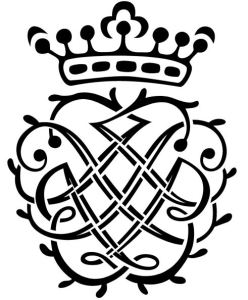The Art of Heinrich Scheidemann
Le Concert Brisé, William Dongois
Accent ACC24302. 68′

This is an important recording as it brings the music of Heinrich Scheidemann to a wider audience than just organists. Unfortunately, many organists are not aware enough of the organ compositions of this major North German composer of the early Baroque era. He was one of the most important pupils of Sweelinck in Amsterdam in the early 17th century, moving on (as did several other Sweelinck pupils) to an important organist post in Hamburg; at the enormous organ of Hamburg’s Catharinenkirche, recently restored back to the time of Bach’s famous visit, but still containing many pipes from Scheidemann’s time. He was part of an extraordinary tradition of North German organ playing that led to Buxtehude and, ultimately, the young Bach. It seems that the only surviving Scheidemann pieces are for organ, plus a few for a stringed keyboard. So this instrumental interpretation, although not without a number of issues for the purist, is a very welcome addition to the many CDs of Scheidemann’s organ music.
Most of the pieces are arrangements of organ pieces, including half of the 12 surviving Scheidemann examples of the compositional process known as ‘intabulation’. We know from records of organist auditions that this was an essential part of an organist’s skill from the 15th to mid 17th century. In Scheidemann’s case in Hamburg, when the rotating choir wasn’t present at any of the city churches, the organist was expected to play the motet for the day on the organ, adding his own textural additions to the notes of the motet. To the extent that in these pieces, Scheidemann was adapting an existing piece to suit his instrument, it is entirely reasonable for Le Concert Brisé to further adapt and arrange them for their instruments – William Dongois, cornetts, Alice Julien-Laferrière, violin, Odile Bernard, recorder, and Jean-Christophe Leclere, organ.
My personal problem in listening to this CD is that I know most of Scheidemann’s organ works intimately, have all the scores, and have played many of them in recital (most recently, here). This makes me super sensitive to the Le Concert Brisé arrangements. I don’t want to appear over-critical of what is an impressive recording, but some points are worth mentioning.
The organ of the Église Jésus-Ouvrier, Talange, is a modern instrument (2006) in Italian Renaissance style, and is very different from the organs of Scheidemann’s day and geographical location in Hamburg. Italian organs often work well with the cornetto, but the Principale rank lacks the presence of a North German Principal and, on this organ, often sounds rather ‘breathy’ and with a pronounced initial transient (often referred to as ‘chiff’). It also lacks the large pedal division of a North German organ, the ‘pull-down’ Italian pedals adding nothing.
In the pieces which use the cornet, violin and recorder, the recording gives the cornet rather too much presence, considering that the music is generally polyphonic, often with just one of the voices decorated. There are some places where the violin takes this ornamented line, while the cornet takes one of the subsidiary polyphonic voices, upsetting the polyphonic balance. Occasional the additions to Scheidemann’s text detract, rather than enhance the music. For example, In dich hab ich gehoffet, Herr, (a verse from a set of chorale variations, viewable on IMSLP), the flute creates an additional independent line, and the strict counterpoint of many of the other lines is blurred by changing instruments mid-flow, all upsetting the polyphony. Scheidemann’s organ had stops that imitated all of the instruments of Le Concert Brisé (and many more), including a Zink (=cornett, cornetto) stop that exactly matched the compass of the instrument. His solo lines were played on the Ruckpositive division of the organ, prominently positioned on the gallery of the organ loft speaking directly into the body of the church. Although changes of registration were possible, they would not have occurred mid-flow or, as in this recording, when the melodic line goes below the range of the instrument.
An example of this is in Verbum caro factum est, here played by the violin alone, plus organ. The organ has to take over the decorated line when it descends into the bass, notably towards the end, when the organ plays alone for an extended passage before the violin returns for the final few bars. That said, the joy of this track is the excellent way that violinist Alice Julien-Laferrière articulates the seemingly endless run of semiquavers. All organists should listen to this track, as it is an essential but often overlooked aspect of organ playing, bringing life to what could otherwise be a rather dull sequence of notes.
Equally skilled on their instruments are William Dongois, Odile Bernard, and Jean-Christophe Leclere, the latter also having three organ solos.
Despite my reservations, do buy this recording, but balance it by listening to some of the many recordings of Scheidemann played on large North German organs. Even if William Dongois and Le Concert Brisé achieve nothing else apart from drawing attention to this important composer, they deserve credit for that alone.

One thought on “The Art of Heinrich Scheidemann”